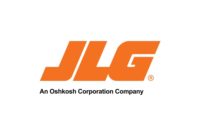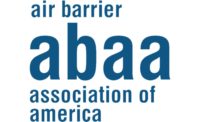The Air Barrier Association of America announced the launch of the country’s first-of-its-kind Large Building Whole Building Airtightness Program, which includes both certification and training.
Whole Building Airtightness Certification
With airtightness codes rapidly changing to require whole building air leakage testing in various jurisdictions, the ABAA offers building professionals a multi-tier certification program to validate proficiency in equipment set-up, result interpretation and air barrier testing principles. The Level I certification is designed for blower door technicians with some experience testing residential and low-rise (three-story) buildings and businesses wanting to expand blower door testing to include large buildings. Level II is designed to fast-track experienced blower door technicians to certification and be recognized for their years of industry experience and extensive knowledge.
“The development of the [WBA] certification program is the confirmation of all these skills and abilities [equipment set-up, result interpretation and air barrier testing principles],” explained ABAA Executive Director Laverne Dalgleish. “We follow ISO-17024 for certification, so we can advertise and proclaim that these people, once they’re certified, know how they’re going to run the whole building airtightness test, and it’s going to be accurate within the bounds of the test.”
“[ISO] accreditation is third-party confirmation that our certifications are developed to rigorously high standards and that our best practices are recognized worldwide,” explained Ryan Dalgleish, chief operating officer of the Air Barrier Association of America.
Certification is valid for a period of five years and must be maintained yearly with a 5-year recertification process. Interested candidates can learn more at airbarrier.org.
Whole Building Airtightness Training
The objective of the WBA training is to educate both entry-level and experienced blower door technicians in the planning, preparation and execution of a blower door airtightness test on commercial and large buildings in conformance with industry-standard test methods. The training is an intensive five-day program consisting of two days of conceptual learning, two days of hands-on training, and concludes with students setting up, conducting and analyzing the results from a real-life whole building test.
“With recent developments to enforce commercial building airtightness codes, especially in the state of Washington, the ABAA recognized the lack of trained professionals to conduct tests in a commercial setting,” Laverne Dalgleish explained. “With this in mind, the ABAA gathered industry experts and developed a program to thoroughly train and certify professionals in an unbiased environment to conduct airtightness building testing, and we are positive this will bring a new level of legitimacy to the industry.”
To date, the ABAA has held four training sessions at South Seattle College, with over 50 professionals attending. The partnership with South Seattle College allowed the ABAA to use a facility designed for proper classroom education and a building to conduct hands-on testing and training. The ABAA is working with additional institutions nationwide to offer the training course.
The students who actively participated in training had positive feedback, noting:
- “Very thorough, surpassed my expectations,” said Lucas Doran, building performance lead at ThermaWise.
- “Along with the in-depth classroom instruction, we experienced a real-life test sample with a two-story building,” said Pamela Jergenson, BECx technical manager at Braun Intertec. “Fantastic learning experience!”
After training, students are encouraged to get their Whole Building Airtightness certification with the ABAA.




Report Abusive Comment